Horological Showdown: The Patek 5711 vs the A. Lange & Söhne Odysseus 363.179
Buyers GuidesPublished by: Samuel Colchamiro
View all posts by Samuel Colchamiro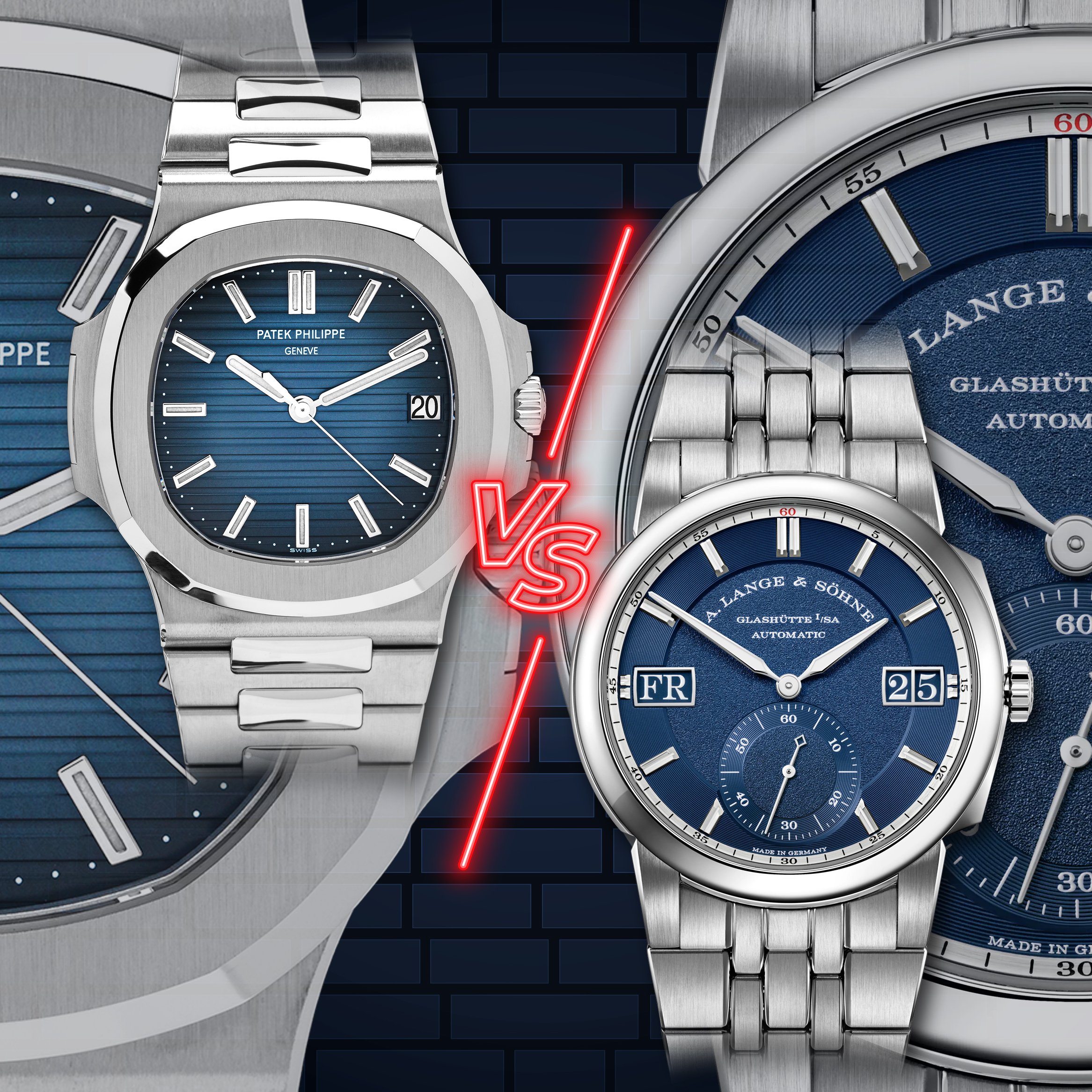
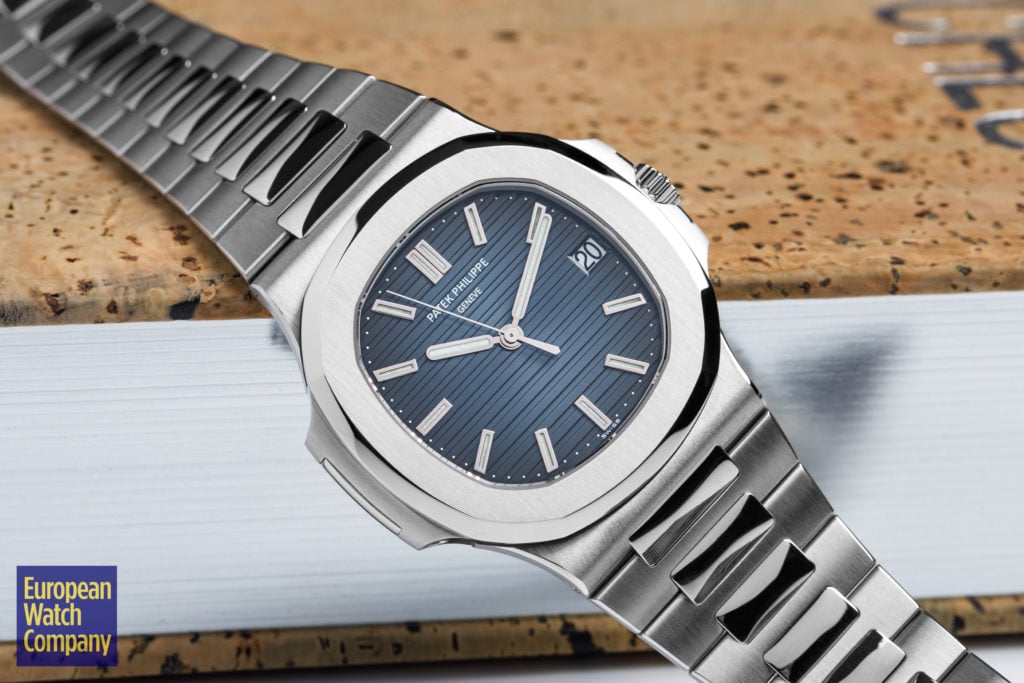
Today, we are comparing two of the greatest integrated bracelet steel sports watches on the market. Patek’s 5711/1A-001 became a cultural icon seemingly overnight as the demand for these pieces exploded. Trading for astronomical prices, the watch quickly was unattainable for most collectors. Beneath this hype lies a truly magnificent watch, with a unique geometric design that we’ll cover later, and an equally beautiful automatic winding movement. This watch may not be the first model that comes to mind when thinking of classic Patek, but in the modern context, the watch has become one of the faces of the brand.
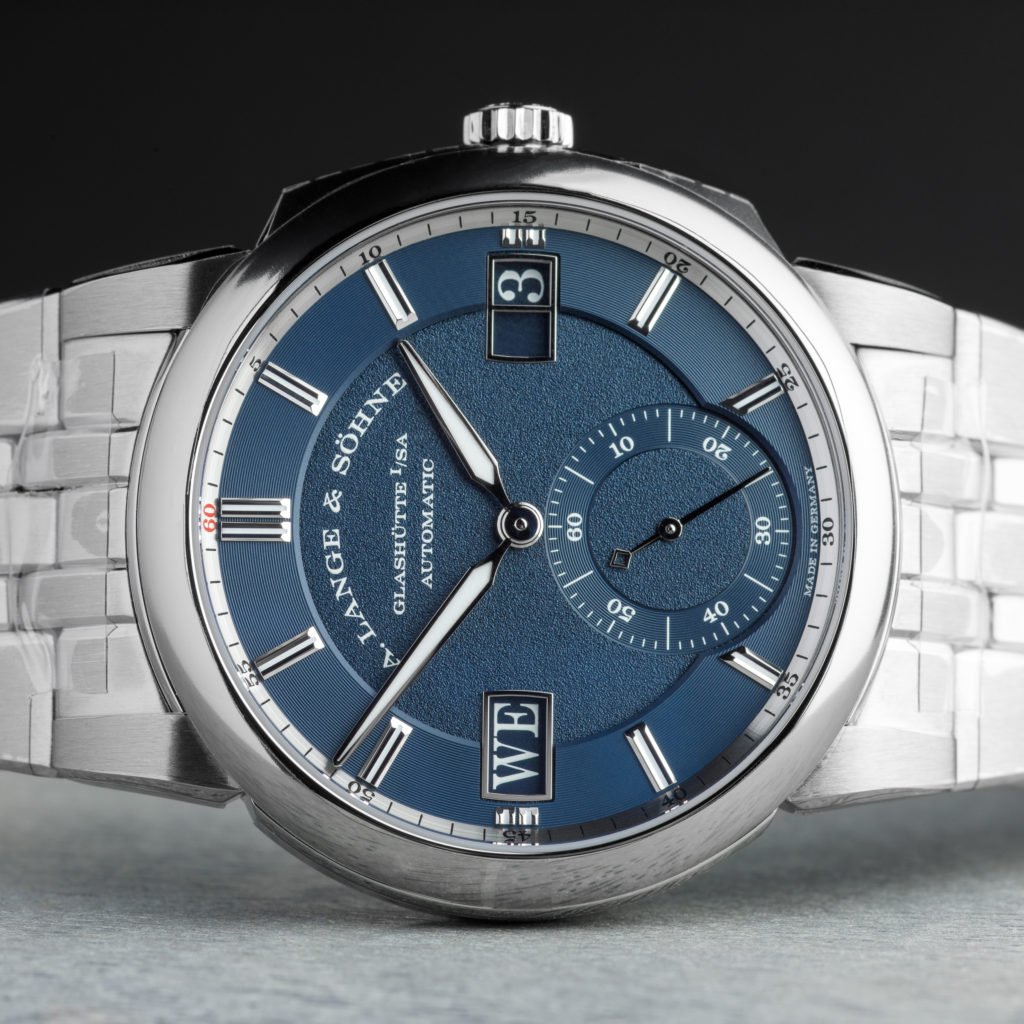
On the other end of the aisle, Lange shocked collectors with the release of the Odysseus, a stark departure from the austere dress watch designs that are the norm from A. Lange & Söhne. While the Odysseus may not seem like a typical choice for Lange, it nonetheless is distinctly a Lange watch. The watch is sporty, yes, but at the same time so consistent with the Lange design language that it fits comfortably amidst the other collections. The Odysseus, controversial at first, has emerged as a classic and drawn a younger crowd to Lange.
While both of these watches are incredible, we will compare them in a head to head battle to determine which is best for you.
History
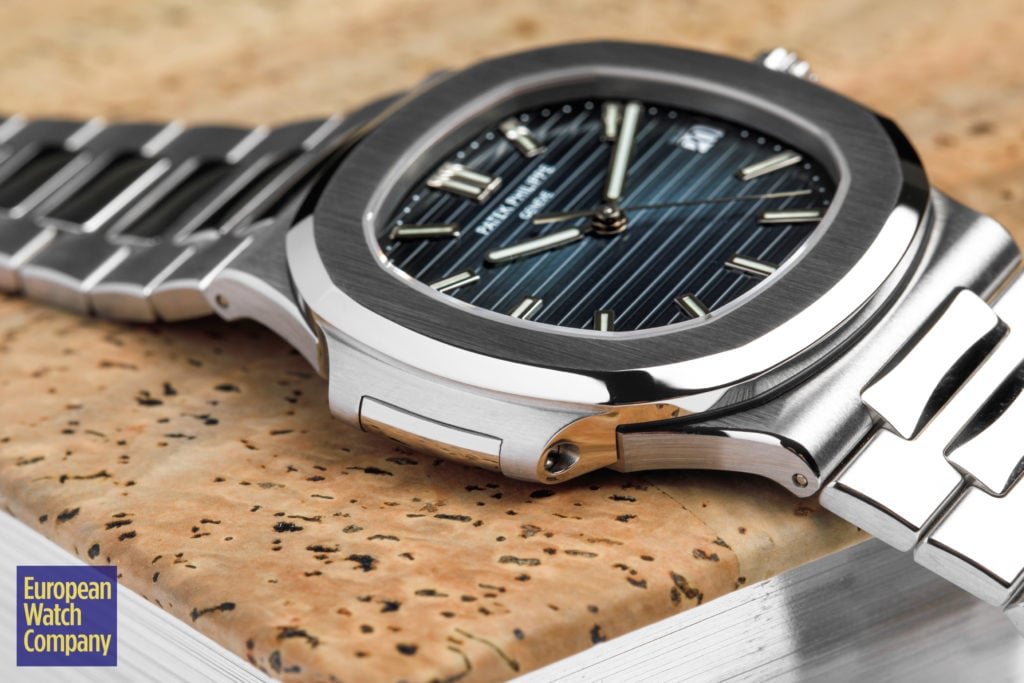
The Patek Philippe Nautilus line was launched in 1976 with the reference 3700. The release was likely in response to the 1972 Audemars Piguet Royal Oak. At 42mm, the watch was large for the time, and was designed by the same famed visionary of the Royal Oak, Gerald Genta. The Nautilus was modeled after the aesthetics of a ship’s portal. Like the Royal Oak, the geometric bezel shape became a defining feature. After several further references were conceived, in 2006 Patek introduced the 5711, which would prove to be the most successful in the collection’s history.
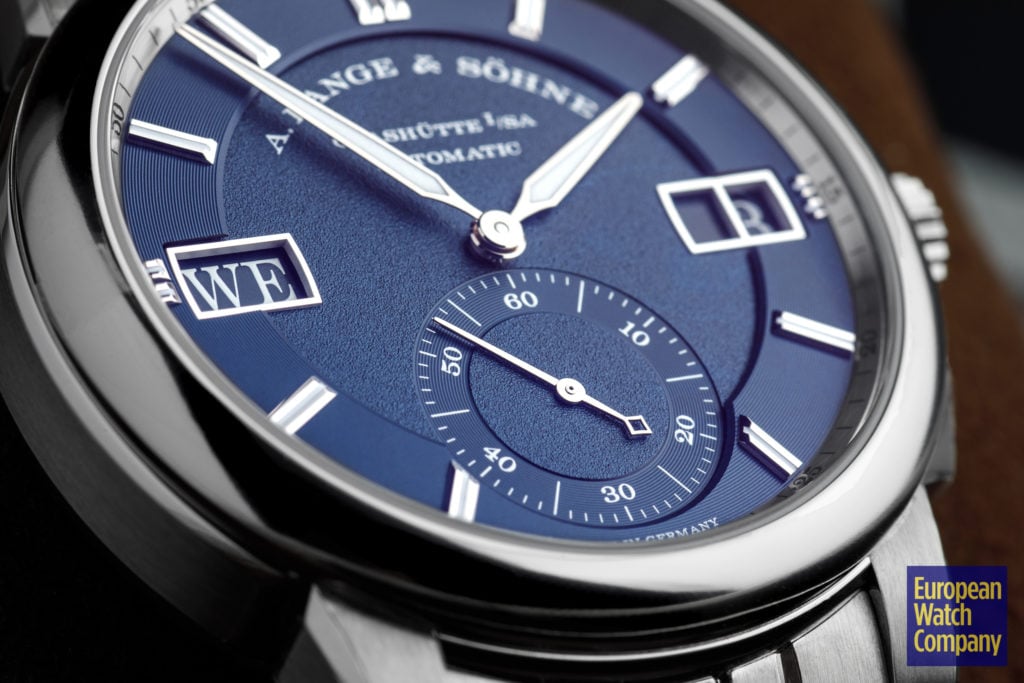
Prior to the Odysseus, it was quite rare for Lange to release any watch in steel. Only 5 models were made and released to the general public in steel at the time. It took over 15 years to develop the Odysseus, and this shows in the seamless perfection of each and every detail of the model’s execution. When it finally was launched in 2019, 25 years after the inaugural collection, the Odysseus became the first serially produced stainless steel watch made by A. Lange & Söhne.
Design Details
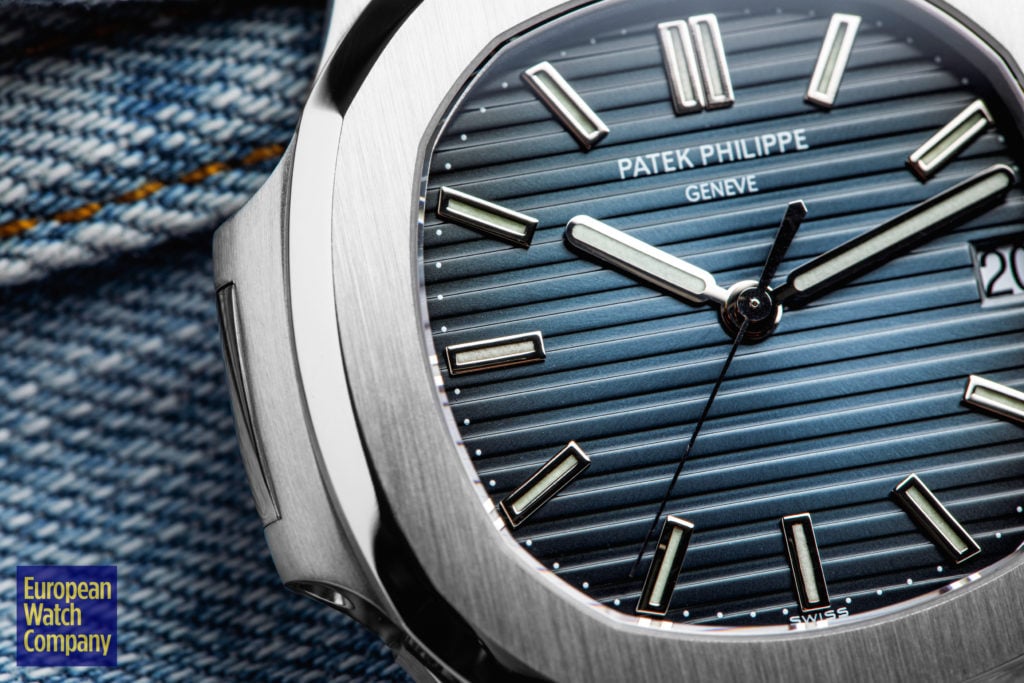
While both the Patek Nautilus and the A. Lange & Söhne Odysseus share a blue dial and integrated bracelet, the similarities all but end here. The Patek 5711 has a flat bezel with eased side facets, polished to contrast with the brushing of the main bezel. Similarly, the bracelet features polished center links alongside satin-finished side links. The dial is a significant part of the overall piece’s design, with grooved lines subdividing the dial scape, equal in proportion to the width of the hands and the indexes. While the watch is casual compared to many other Patek offerings, there’s no doubt that an aura of quality oozes from each corner and polished component. This is not a crude tool watch, it’s a gentleman’s sports piece. Aside from a simple date window at 3, the piece remains uncomplicated and simplistic from a horological standpoint.
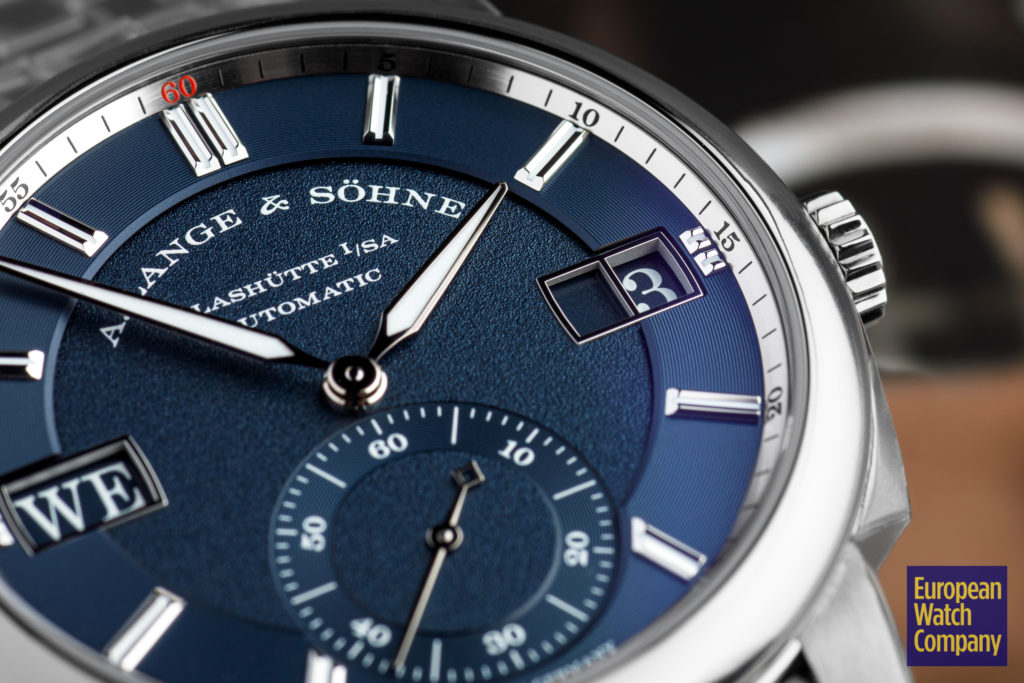
At the other end of the spectrum, the A. Lange & Söhne Odysseus is much more complex, both from a design standpoint, and from a complication standpoint. The dial now displays the time alongside the day and date, each balanced in apertures on opposite sides of the dial. The dial itself is subdivided into three different topographies. The lowest of all is the snailed subsidiary seconds dial, followed by the main body of the dial which is textured in a sandpaper appearance, followed by a raised and snailed ring upon which the indexes are applied. This sophisticated design helps to convey a hierarchy within the complications in addition to adding depth to the landscape. A key facet of the Odysseus design was the preservation of lugs. With most integrated bracelet pieces —5711 included— the watch has no lugs, but instead “integrates” the bracelet directly into a broadened case. The issue is lugs are one of the defining features of Lange watches. Thus, in this case, the integrated bracelet exists alongside the traditional lug profile of a Lange watch. The bracelet as well is a piece of work on its own. The internal facets of the links are each hand polished. The bracelet looks and feels high end. Finally, to control the day/ date functionalities, Lange has integrated hidden pushers around the crown that help to switch through the various displays.
Inner Workings
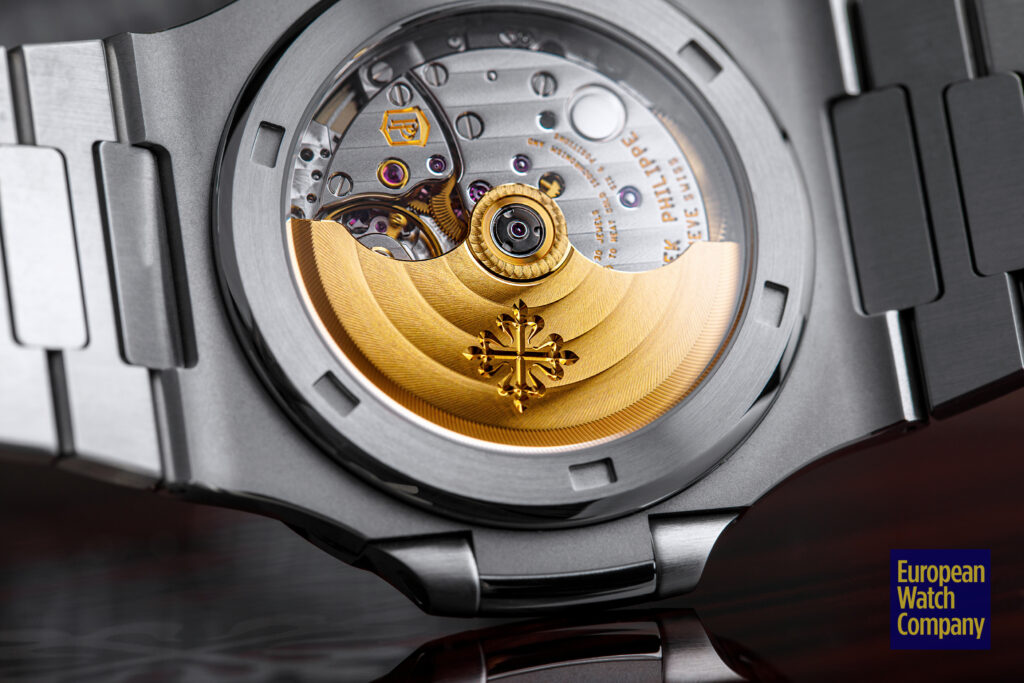
Patek Philippe’s 5711/1A-001 is powered by the caliber 324 S C. While the 5711 is Patek’s workhorse watch, the movement doesn’t look like it would sit in a workhorse piece. The masterfully crafted caliber flaunts a flashy precious metal oscillating weight with perfectly decorated bridges showcasing hand applied Côtes de Genève. Earlier examples of the 5711 also feature the Geneva seal. While the watch is a utilitarian design, the 324 S C reminds collectors that underneath the hood, the 5711 packs a serious punch.
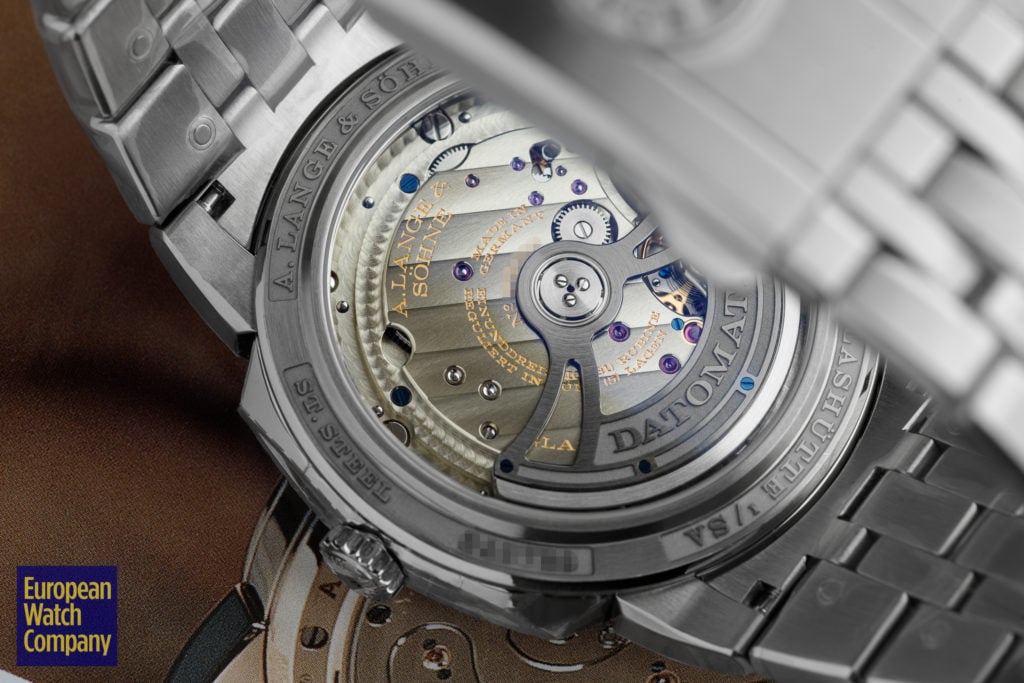
Lange, on the other hand, has taken their quintessentially German design to the caseback as well. The caliber L155.1, with its rhodium plated oscillating weight and platinum addition is a capable movement, yet it maintains the aesthetics of other Lange watches, with golden chatons, blued screws, a free hand engraved balance cock, and Glashutte striping. The watch is classic Lange and the same can be said for the movement.
Both Patek and Lange have finished their watches perfectly. Ultimately, the distinctions between the Patek and Lange approaches to movement finish speak to their two philosophies to watchmaking stemming from Swiss and German influences respectively. It’s up to you to decide which you prefer.
Personality
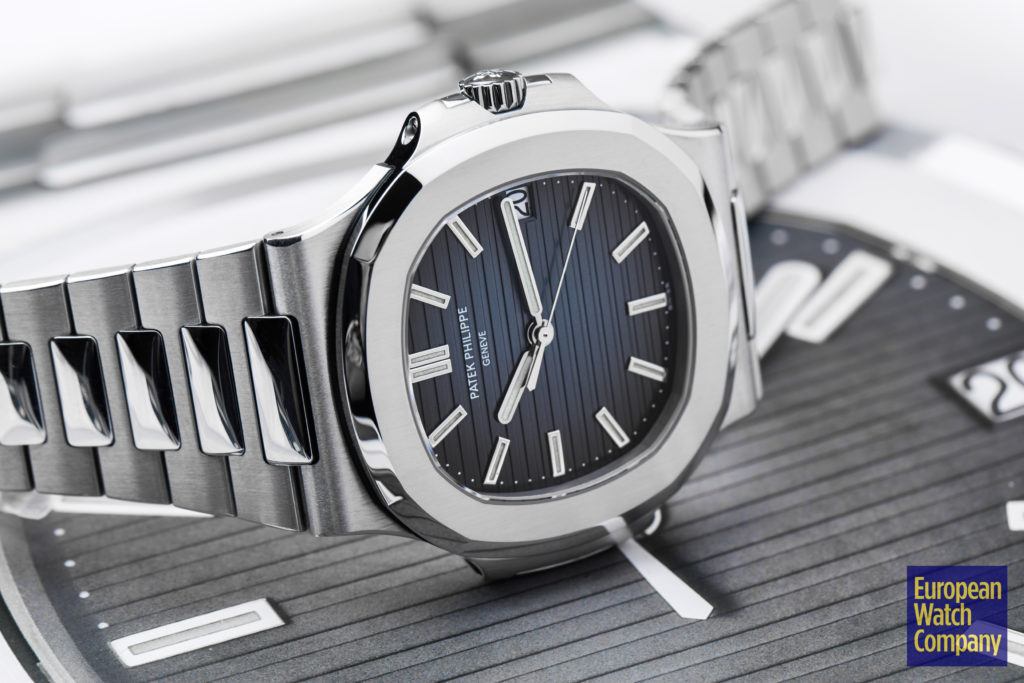
Now that we have covered the main differences between these two exceptional pieces, it is time to identify who would gravitate towards what. There’s no doubt that owning a 5711 is a flex. Random passersby will notice the watch without any association to the watch space or interest in high end watches. The cultural status the watch affords is a big selling point for some and a weakness to others. For other collectors, the quiet quality of the Lange is much more attractive. Those that want others to notice and comment on what they are wearing will always prefer the Patek and those seeking a more under the radar presence, recognizable only to those in the know, will side with the Lange.
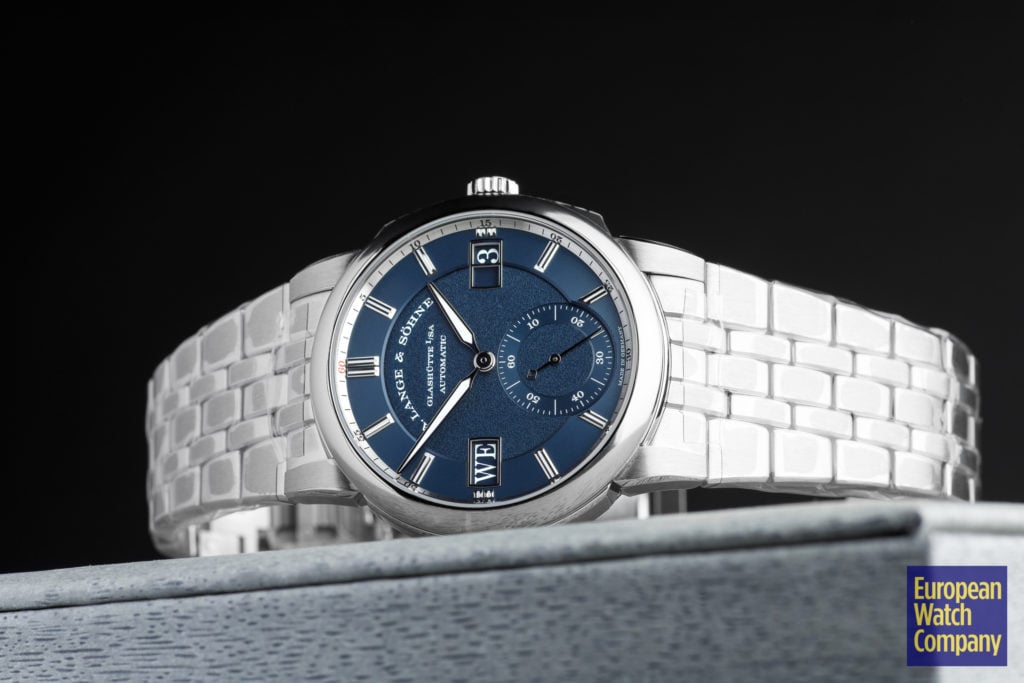
From a purely horological standpoint, it’s hard to fault either watch. The pieces both have blue dials and cohesive design languages, but the underlying DNA of the watches is completely separate. Within the Patek collections, the 5711 is one of the more youthful options. This is a really important component of the collections to invest in, as it builds the next generation of collectors. Similarly, for Lange, the Odysseus has been for many the gateway into the world of the Datograph and Lange 1. Collectors who never considered dress watches often found themselves with a classic timepiece on their wrists after having bought the gateway drug Odysseus.
Final Thoughts
Regardless of which watch you decide is best for you, collectors can be sure that buying a Patek 5711 or an A. Lange & Söhne Odysseus will make them a part of a broader mission to extend the world of high end watchmaking into a new market segment. The notion of the luxury sports watch has been forever impacted by these two models and we couldn’t love them both more.
Previous Article
The Ultimate Perpetual Calendar Comparison: Patek vs. Journe vs. Lange
Next Article
Luck of the Irish: The Patek Philippe 5905P-014 Weir and Sons Limited Edition
Join 75,000+ Other Watch Enthusiasts
Get our new arrivals first.